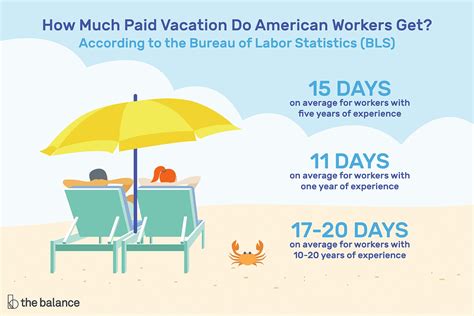Exploring Vacation Time And Pay For Employees: An Overview

As an employee, one of the most important aspects of your job is your vacation time and pay. These benefits not only provide you with much-needed time off and compensation, but they also contribute to your overall job satisfaction and well-being. In this post, we will explore the different types of vacation time and pay that employees can receive, how they are calculated and administered, and the importance of these benefits for both employees and employers.
Types of Vacation Time
1. Paid Time Off (PTO)
PTO is a type of vacation time that combines sick days, personal days, and vacation days into one pool of time off that employees can use for any reason. The amount of PTO varies by company, but typically ranges from 10 to 25 days per year. With PTO, employees have more flexibility in how they use their time off, but they may also be more limited in the total amount of time they can take off.
2. Vacation Days
Vacation days are a specific number of days that employees receive each year to use for vacation purposes only. The number of vacation days varies by company and may be based on years of service or job level. Vacation days are typically use-it-or-lose-it, meaning that any unused days at the end of the year are forfeited.
3. Sick Days
Sick days are a type of vacation time that is used when an employee is ill or injured and unable to work. The number of sick days varies by company, but typically ranges from 5 to 10 days per year. Some companies may also offer short-term and long-term disability benefits for extended periods of illness or injury.
Calculating Vacation Pay
1. Hourly Employees
For hourly employees, vacation pay is typically calculated based on their hourly rate of pay. For example, if an employee earns $15 per hour and takes one week of vacation (40 hours), their vacation pay would be $600 ($15 x 40).
2. Salaried Employees
For salaried employees, vacation pay is typically calculated based on their annual salary. To calculate the daily rate of pay, divide the annual salary by the number of workdays in a year (usually 260). For example, if an employee earns $50,000 per year and takes one week of vacation (5 workdays), their vacation pay would be $961.54 (($50,000 / 260) x 5).
Administering Vacation Time and Pay
1. Company Policy
Each company has its own policy for administering vacation time and pay. This policy should be clearly communicated to employees and should include information on how much vacation time they are eligible for, how to request time off, and how vacation pay is calculated and administered.
2. Accrual vs. Lump Sum
Some companies allow employees to accrue vacation time throughout the year, while others provide a lump sum of vacation time at the beginning of the year. Accrual means that employees earn vacation time based on the number of hours they work, while lump sum means that they receive their full allotment of vacation time at the start of the year.
3. Carryover Policy
Some companies allow employees to carry over unused vacation time from one year to the next, while others require that all vacation time be used by a certain date or forfeited. It is important for employees to understand their company’s carryover policy to avoid losing any unused vacation time.
Importance of Vacation Time and Pay
1. Employee Health and Well-being
Vacation time and pay are essential to maintaining employee health and well-being. Time off allows employees to rest and recharge, reducing stress and preventing burnout. This, in turn, leads to increased productivity and job satisfaction.
2. Employee Retention
Offering competitive vacation time and pay is essential for retaining top talent. Employees who feel valued and appreciated are more likely to stay with a company long-term, reducing turnover and associated costs.
3. Company Culture
Vacation time and pay are an important part of a company’s culture. Companies that prioritize employee well-being and work-life balance are more likely to attract and retain top talent, creating a positive and productive work environment.
FAQs
Q: How much vacation time am I entitled to?
A: The amount of vacation time you are entitled to varies by company and may be based on years of service or job level. Check with your company’s HR department or employee handbook for specific information.
Q: Can I use my vacation time for any reason?
A: If you have PTO, you can use your time off for any reason. If you have vacation days or sick days, they are typically designated for specific purposes.
Q: What happens if I don’t use all of my vacation time?
A: Depending on your company’s policy, unused vacation time may be carried over to the next year, forfeited, or paid out as a lump sum.
Q: Can I negotiate my vacation time and pay?
A: In some cases, you may be able to negotiate your vacation time and pay as part of your overall compensation package. However, this will depend on your company’s policies and your individual job level and responsibilities.
Q: Are there any legal requirements for vacation time and pay?
A: The Fair Labor Standards Act (FLSA) does not require employers to provide vacation time or pay. However, if a company does offer these benefits, they must comply with their own policies and any applicable state laws.
